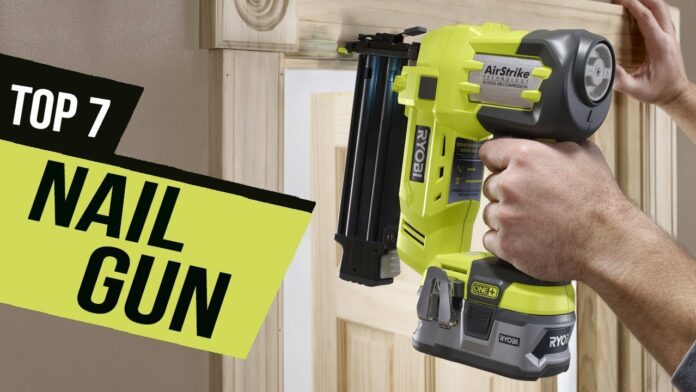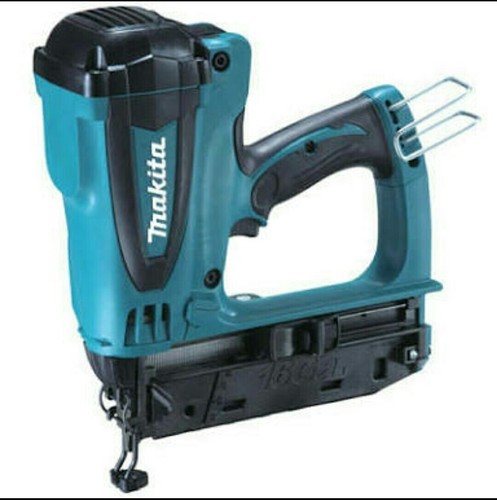When working near power outlets, the cordless design eliminates the risk of tripping over cords or becoming tangled. Plus, compared to traditional models, this list of Finish nailer has a more comfortable grip, making them easier to use for longer periods of time.
Aside from the miter saw, the finish nailer has revolutionized the speed, convenience, and neatness with which door and window trim, crown molding, baseboard, and chair rail are installed. Finish carpenters do have hammers, but they don’t use them to pound cordless nail gun.
Instead, they utilize an electric nail gun, a power tool that drives a finish nail with the help of a battery, pressurized air, or even a miniature butane-powered engine. The Finish nailer drives a fastener into the trim, perfectly countersinking the cordless nail gun below the surface of the wood.
Finish nailer or cordless nail gun can also be used for other purposes. To hold two components of a subassembly together before drilling holes for screws or bolts, use one to fire one or two discrete electric nail gun. And cordless nail gun and finish nailer, like the ones we tested, is the most convenient of all because there’s no air hose dragging behind the tool.
Cordless Finish Nailer
Our examination focused on cordless (battery-powered) finish nailers, a popular tool among both professionals and amateur builders. The reason for this is simple: unlike compressed-air nailers, you don’t need a compressor or an airline to operate the tool. And you’re not hampered by an air hose as you work on trimming the lawn.
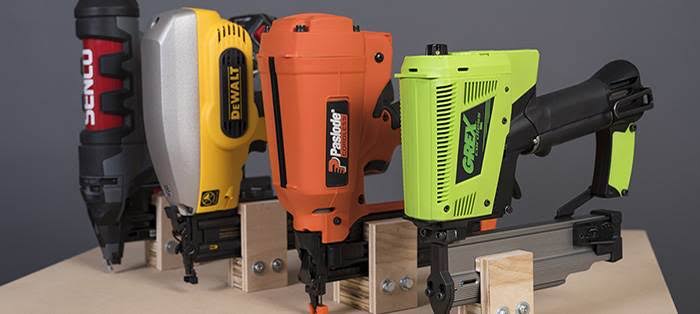
All you have to do is put in a charged battery and a strip of nails, and you’re ready to go. The tools’ batteries, motor mechanism, and ergonomics have all been improved, giving these models remarkable nail-driving power. They’re also a lot of fun to use because of their mobility. To secure the crown, take them up a ladder.
Kneel to secure the baseboard. Chair rail should be run like it’s nobody’s business. There’s no air hose tying you up, and there’s no banging compressor in the background. Given the recent product improvements in this finish nailer category (described above), it felt like the right moment to buy a few of these products and put them through their paces.
7 Best Finish Nailer
Scroll down to learn about our testing process and in-depth assessments of these electric nail gun and other models, as well as information on the top finish nailer from our test.
DeWalt Nail Gun 20v
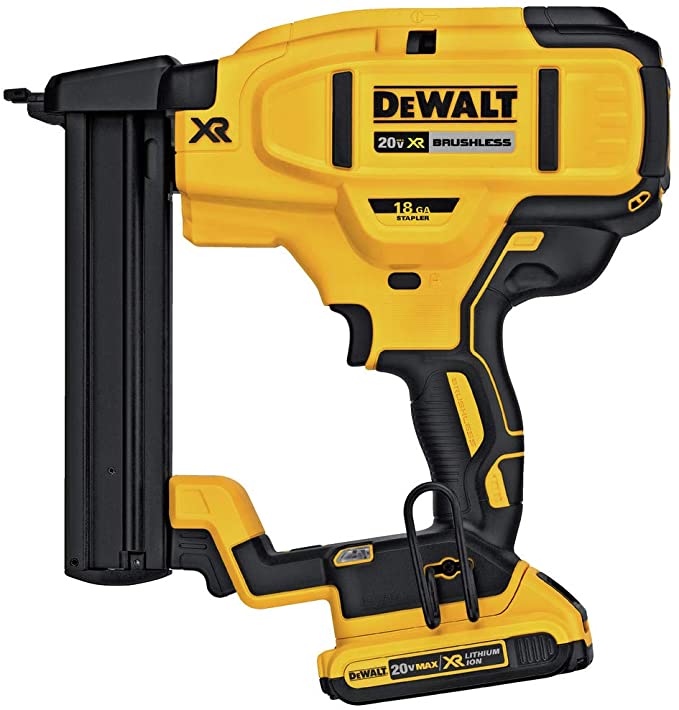
Weight: 6 lb. | Battery: 2 Ah
Nails with an 18-gauge gauge are difficult to work with. Longer nails are more difficult for a nailer to consistently sink into hardwoods without misfiring and jamming in the nose, or firing the nail into the material but not adequately setting it below the surface. The DeWalt, on the other hand, regularly fires one nail after another into red oak with no issues. The tool’s thin grip, weight distribution, and balance are excellent, increasing our productivity, which is also aided by the tool’s sturdy drive mechanism and lack of recoil. Place the gun where you want it to go and fire, then move on to the next nail. It’s that easy with the DeWalt.
Craftsman Nail Gun
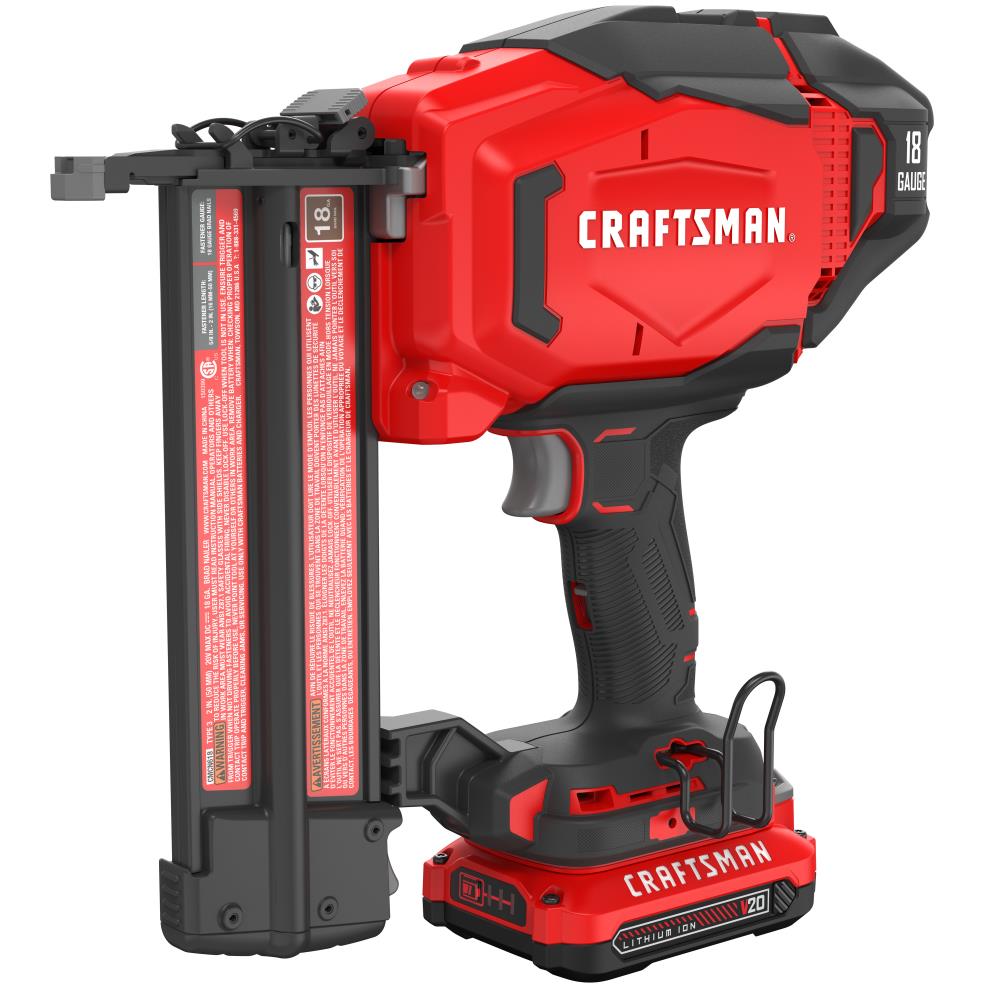
Weight: 5.6 lb. | Battery: 1.5 Ah
When compared to its predecessor, the C3 Speed Shot, Craftsman’s CMCN616C1 earns the title of “most improved.” Don’t get us wrong: it wasn’t a horrible product at all. The new Craftsman, on the other hand, offers more nail-driving power, a superior sightline to the tip, and a more comfortable grip. We were able to successfully fire nails into softwood up to 2.5 inches thick and oak up to 1.5 inches thick. Just be aware that when we fired 2.5-inch nails into tougher red oak, the majority of fasteners had heads that were flush or almost flush to the surface, rather than positioned just below the surface as is desired. We needed an old-fashioned nail set and a hammer to finish driving these nails because their heads were “proud” of the surface. Aside from that, this is a strong, sturdy, and dependable nailer.
Metabo-HPT NT1865DMS
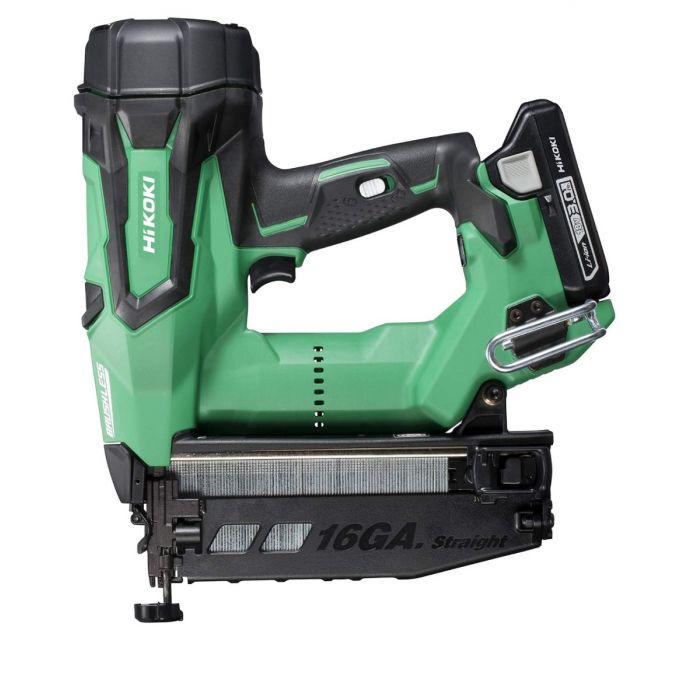
Weight: 6.2 lb. | Battery: 3 Ah
This Metabo performs very identically to the Craftsman above, with the exception that this tool has somewhat less long-nail capacity in both hardwood and Douglas fir. Even in red oak, the NT1865DMS reliably and swiftly discharged 1.5-inch nails and placed them properly. When we tried to fire the 2.5-inch nails, we discovered that several were not properly countersunk, but no misfires occurred. To put it another way, this nailer is a good choice for most softwood trim installations.
Given that you use a nail gun in a variety of odd positions, from crouching low to fasten baseboards to using it overhead to pin moldings to a coffered ceiling, we liked its slim handle and the position of its nitrogen-charged cylinder at the front of the tool, which also happens to make a good handle for many of these odd nailing positions. We also enjoy that it has a good line of sight all the way to the tip (especially for right-handed users), which is enhanced by the gun’s great work light.
Milwaukee Nail Gun
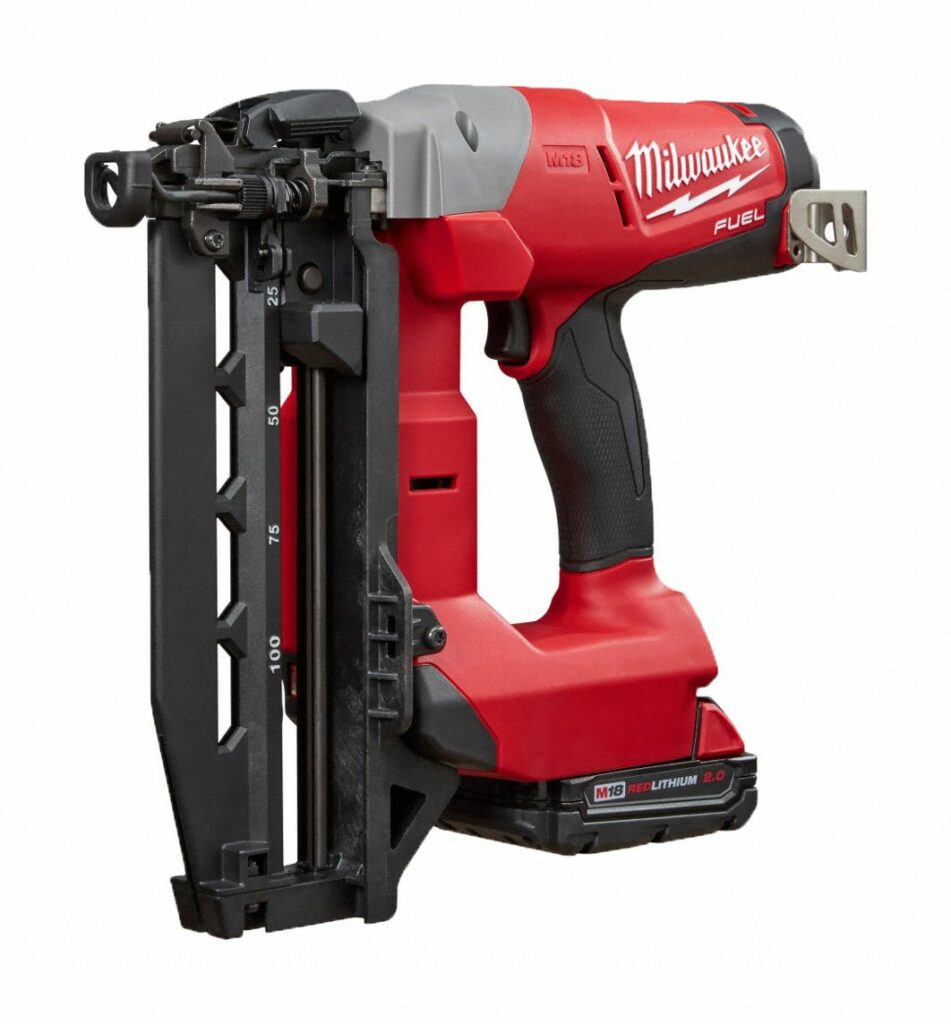
Weight: 4.6 lb. | Battery: 2 Ah
We’ve spent decades testing Milwaukee nail gun, so we know the company isn’t one for exaggeration. However, we were skeptical of their assertion that an 18-gauge nailer could successfully fire into two-inch wood. Not only does 2746 accomplish this, but it also leaves each nail with an immaculate and sharp cavity above the head, ideal for filling. Our time as Milwaukee doubters have come to an end. The mechanism that opens the entire top of the nailer’s snout for full and simple access to free jammed nails (which we didn’t encounter, by the way) is another interesting feature of this instrument. It also has a thin profile and a well-shaped grip, which makes it comfortable to handle. 2746 makes nailing trim a breeze, however, keep in mind that the Amazon link leads to a bare tool (no battery or charger).
Ryobi Nail Gun
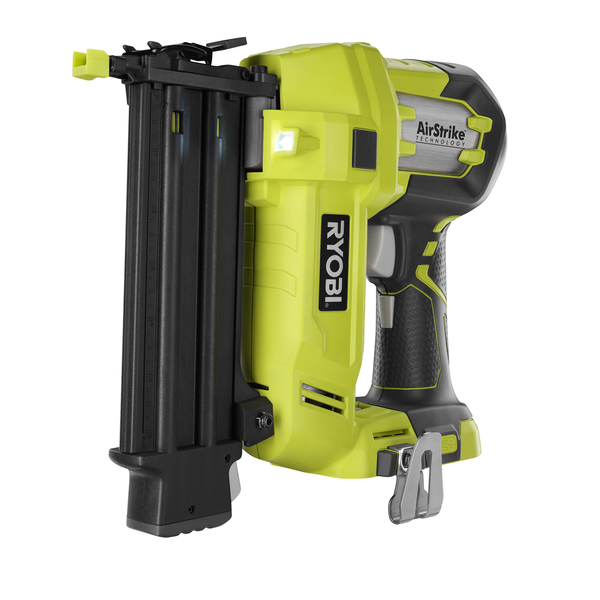
Weight: 6.2 lb. | Battery: 1.5 Ah
The Ryobi is a nailer for do-it-yourselfers. It lacks the long-nail driving power of the top finishers in our test (the Milwaukee, Craftsman, and DeWalt). However, it is economical and effective for the majority of the chores that a homeowner will require it for when fastening two pieces of softwood together, such as during craft projects, nailing on softwood door and window molding, baseboard, and tiny crown molding, and attaching shoe molding. The tool’s lack of bulk will appeal to hobbyist crafters and DIYers; it’s a little shorter and slimmer than the professional-duty nailers displayed here.
In addition, the tool’s rear dial allows for quick and easy adjustment of output air pressure to manage nail depth. Turning the dial clockwise increases air pressure and driving power while turning it counterclockwise reduces air pressure and reduces driving power.
Senco Nail Gun
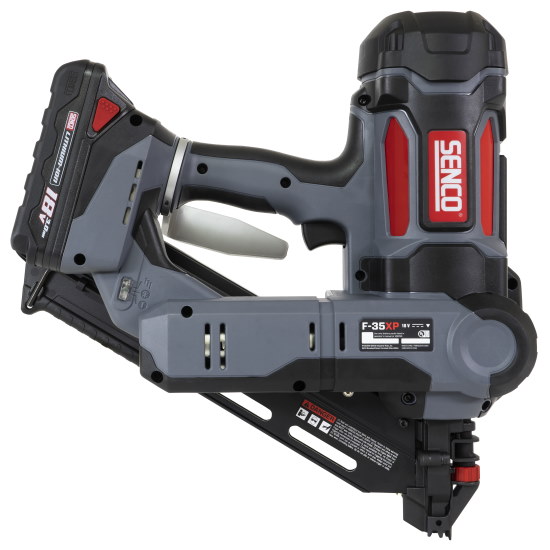
Weight: 6.2 lb. | Battery: 1.5 Ah
Both the Senco and the Milwaukee have extremely quick cycle times (the time it takes for the gun to fire one nail after another); both of these instruments are nearly as rapid as a pneumatic nailer’s nail-driving output. The F18, on the other hand, has a unique design that includes the lower half of the snout as part of the magazine door. This makes it possible to free blocked nails quickly and easily. However, we do have two minor gripes. One is that the gun’s quickness comes with a lot of recoils, which is exhausting. Second, while driving nails into 1.5-inch oak, it was a touch less capable than the DeWalt and Milwaukee.
FAQ’s
What is the purpose of a cordless finish nailer?
A cordless nailer is ideal for folks who don’t want to bother with long extension cables or switching back and forth between outlets. The nails are driven into whatever you’re working on with the use of battery power. They come in a variety of sizes and can be used for a variety of applications.
What is the procedure for resetting a Dewalt cordless finish nailer?
Small nails of varying lengths are used by a Dewalt nailer. When these nails are loaded into the tool, they can sometimes become caught within. It’s critical to get rid of these before attempting to reset the device. Remove the battery and set it aside for at least 20 seconds before proceeding. Then, using a firm table or flat surface, tap out all of the stuck nails. Reinstall the battery and turn on your smartphone once they are free.
What is the difference between cordless nailers’ gauges?
What you’re nailing and the type of job you’re performing will determine the gauge, or size of the nail. Smaller numbers indicate shorter nails, while larger numbers indicate longer nails.
How can you tell the difference between a framing nailer and a finishing nailer?
Framing nailers, on the other hand, often have a larger magazine capacity and can fire more nails at once. Finish nailers are smaller and lighter than other nailers, and they’re used to finish projects.
For what types of projects should I use a cordless finish nailer?
A finish nailer is suitable for projects that require adding trim or molding to the exterior of a room. They can also be utilized to complete modest projects such as cabinets, mantles, and crown molding.
Conclusion
The best cordless finishing nailer for your needs should be chosen based on features, price, and warranty. This will allow you to take advantage of the most appropriate power tool for each occasion. However, not every model meets the greatest client demands. So, rather than picking a random cordless finish nailer, you should take a closer look at several aspects that will help you choose the correct one. We hope that our advice and list have made it easier for you to make an informed decision about this product.

